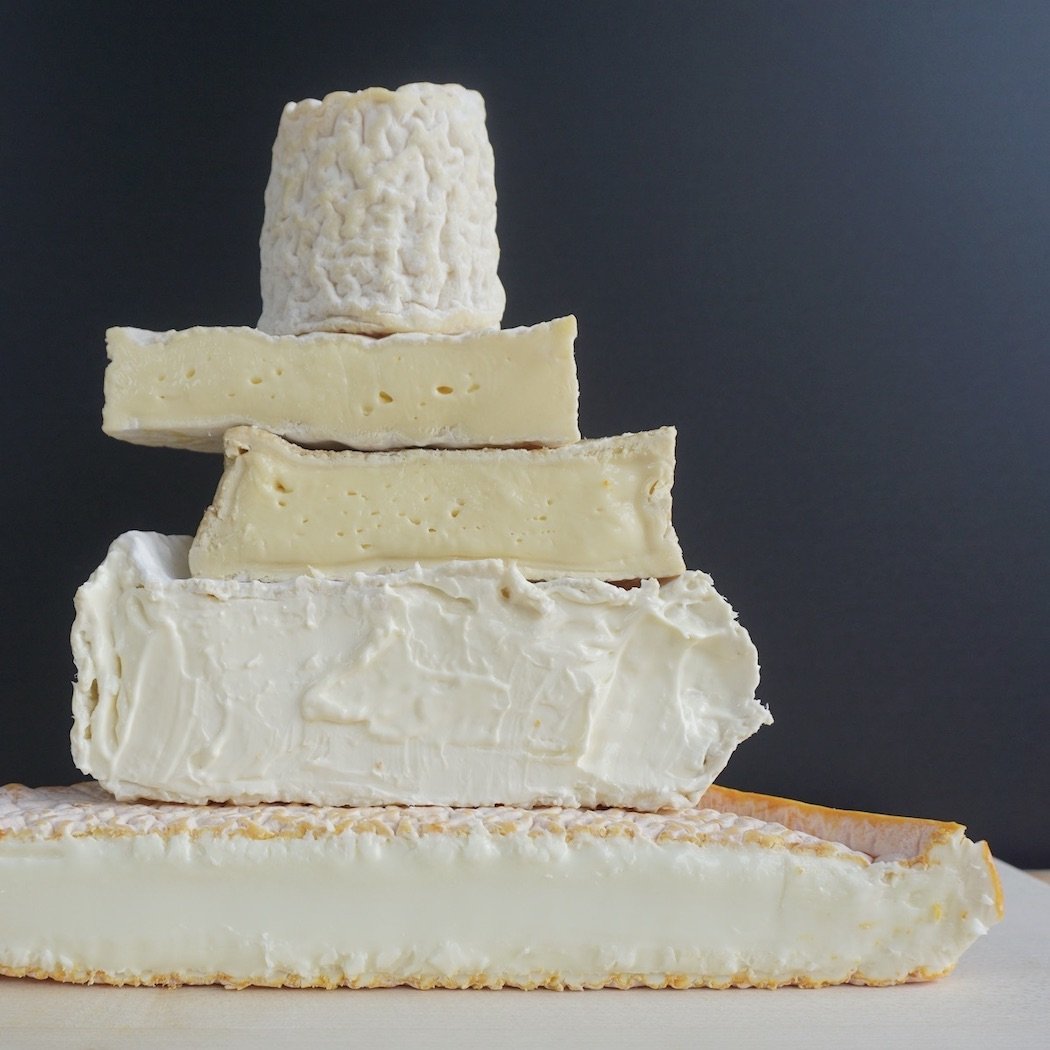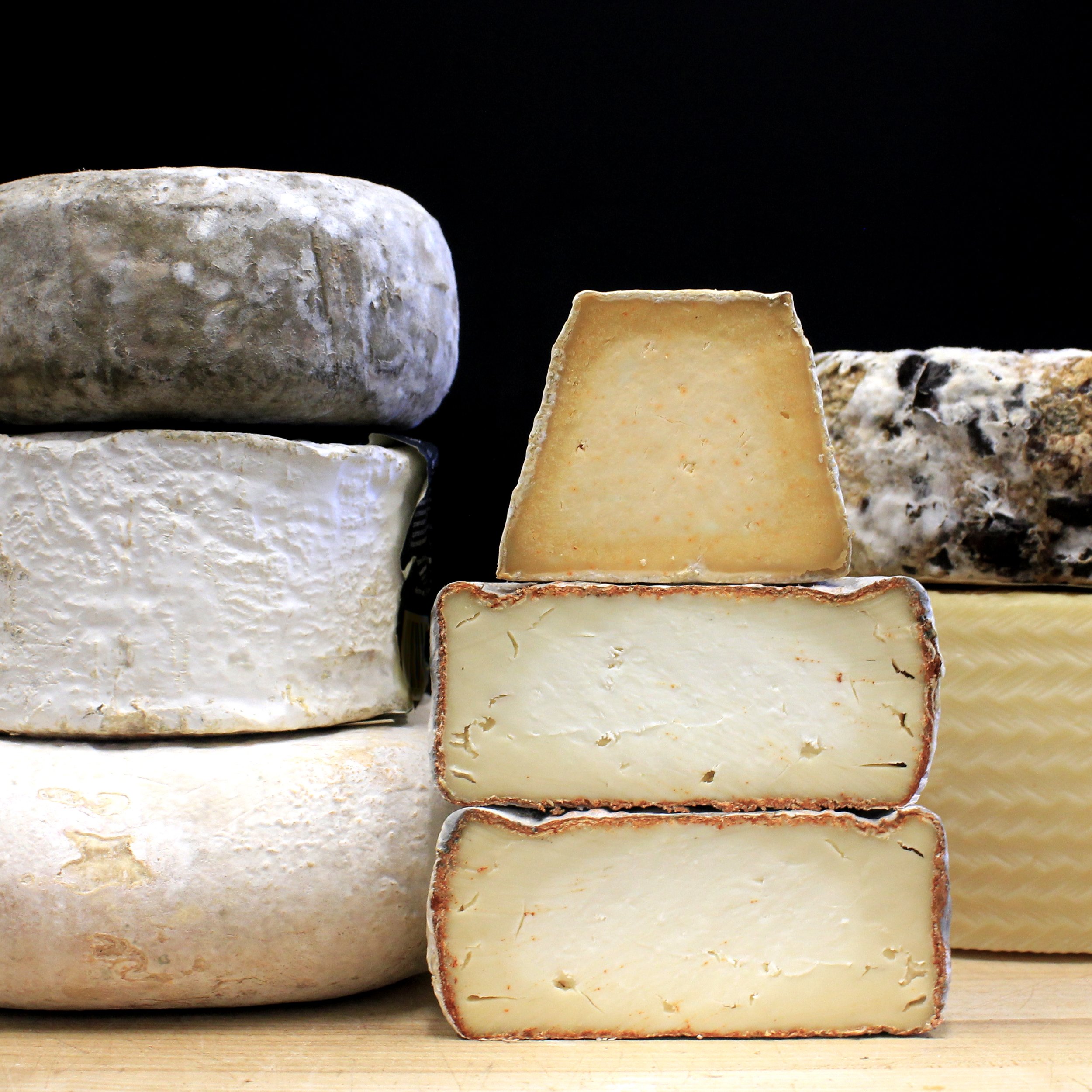by Austin Coe Butler
No doubt you’ve seen the stack of dark orange wheels on our counter, simply standing at room temperature, likely with the cross-section of a half wheel or wedge spangled with crystals. Customers seem to gravitate towards it, mesmerized. This enchanting tower of cheese is built from wheels of L’amuse Signature 2-Year Gouda, and there is no gouda crunchier, or more crystally that L’amuse Signature in our case. Its rich, butterscotch, burnt sugar sweetness and creamy paste studded with crystals have us refer to it lovingly as “cheese candy.”
But what are those craveable, crunchy crystals? In cheese, crystals are typically either calcium lactate or tyrosine.
Calcium lactate is formed as cheese ages and lactic acid comes into contact with the latent calcium in cheese. It’s most often found in aged cheddars, where it is seen on the surface, and doesn’t concern us at the present moment. Tyrosine is an amino acid found in many well-aged cheeses like Alpines, goudas, cheddars, and Grana style cheeses. It is the tell-tale sign of the bacteria Lactobacillus helveticus hard at work. L. helveticus is highly proteolytic, meaning it likes to break down proteins into amino acids like tyrosine. Proteolysis is central to cheese making, as it happens primarily when rennet is added to liquid milk causing casein proteins to break and unravel, and thus coagulating milk into curd, the foundation of cheese. Proteolysis can also happen secondarily, though, through the microbial metabolism of bacteria, yeast, and mold endemic or introduced to the milk, and as the microbes continue to break down proteins, deposits of tyrosine begin to form. (We could also call this by another name: fermentation, as cheese is a living, breathing food.) Calcium lactate and tyrosine are often erroneously called “flavor crystals” or “salt crystals,” but neither calcium lactate nor tyrosine have any flavor, and instead they are great indicators of flavors.
Why call them that then? Simply, marketing. But their presence almost always means you’re about to crunch on a piece of cheese that has had time to concentrate big, complex flavors.
L’amuse Signature 2-Year Gouda has all of these big, complex flavors like aged soy sauce, roasted hazelnuts, or brown butter as the result of a daring, unorthodox process that pays off big. Fromagerie L’amuse is Amsterdam’s premier cheese shop run by Betty and Martin Koster and they provide many of our favorite goudas like Wilde Weide and the goat’s milk Brabander. Betty and Martin buy young wheels of gouda from the Cono Cheesemakers, best known for Beemster, and then their team of opeleggers, the Dutch word for an affineur, or cheese ager, “finish” or mature the cheeses at their own facility by aging them in ideal conditions, and here that big risk, high reward comes in.
What distinguishes L’amuse Signature 2-year gouda is the temperature at which the wheels are aged. Most goudas are aged at a fairly cool temperature, between 45–50ºF, and the Koster’s age most of their goudas at this temperature. But for L’amuse Signature they age the wheels at a warmer temperature, much closer to Parmigiano Reggiano’s maturing temperature than to other goudas, around 55–60ºF. Higher temperature means more microbial activity, more fermentation, more proteolysis, more tyrosine crystals, and more of those big, sweet flavors. The risk is that if there’s anything amiss with the cheese, or if there are any “off” flavors to begin with, they will be accelerated and exacerbated, and the investment of two-years into that wheel of cheese while taking up space and not paying rent was all for naught.
Signature 2-year is phenomenal for all occasions, but it is especially at home for dessert. Served alongside chocolate and espresso at the end of a meal, the bitterness rounds and complements the sweetness. There’s a complex flavor like deeply browned, tantalizingly burnt meat at play in L’amuse Signature that is right at home with a strong, dark Dutch beer or snifter of peaty whiskey that make for an unforgettable experience after dinner pairing. Absolutely inundated with tomatoes during late summer? Try this recipe for “Snow with L’amuse Signature,” a tart made with tomatoes seasoned in balsamic vinegar and black pepper on crisp phyllo dough topped with dusting of L’amuse Signature and enjoy alongside a glass of crystal clear beef-stock. Or just eat it on its own. When was the last time you paired a Butterfinger?







